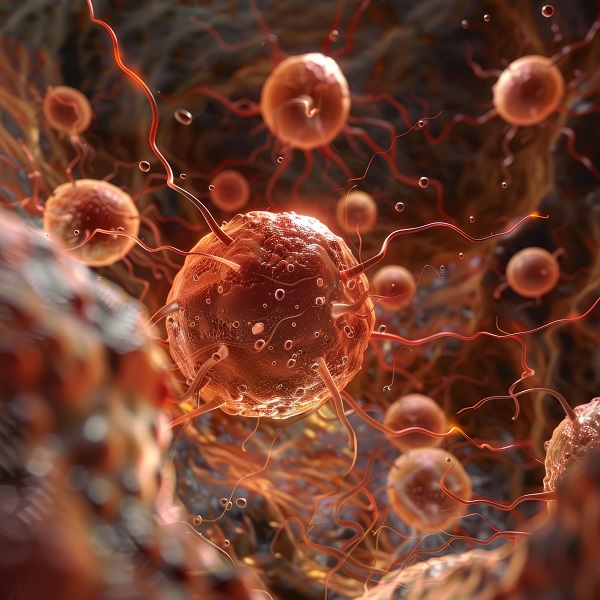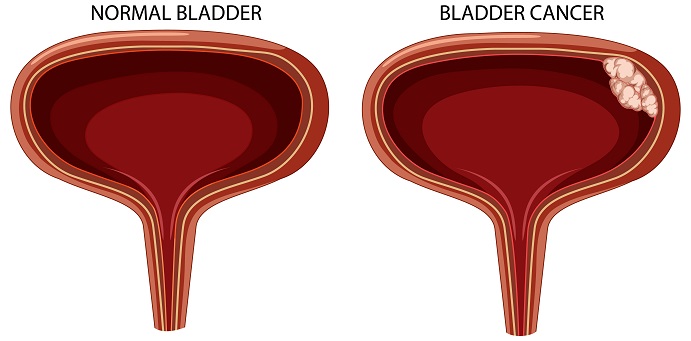The urinary tract helps to get rid of urine. The lower part of the urinary tract includes the bladder and the urethra. The bladder s tores urine until it is ready to be released. The urethra is a canal that carries the urine out of the body. The urinary flow is monitered by a muscles around the opening of the bladder called the sphincter. Signals from the brain tell the sphincter when to relax and the bladder when to contract to let the urine flow out of the body.
tores urine until it is ready to be released. The urethra is a canal that carries the urine out of the body. The urinary flow is monitered by a muscles around the opening of the bladder called the sphincter. Signals from the brain tell the sphincter when to relax and the bladder when to contract to let the urine flow out of the body.
Bladder Cancer means that certain cells in the urinary tract have changed in ways that are not normal. With time, the cancer cells destory healthy tissue and may spread throughout the body. Why cells become cancerous is unknown, however it is strongly linked to cigarette smoking.
Learning the parts of your urinary tract, the structure of your bladder, and which changes may occur can help to better understand bladder cancer.
The human body is equipt with two bean shaped kidneys that act as filters for the body. They filter the chemicals from everything that has been digested in the body, so that it can be released during urination. If certain chemicals build up within your kidney, they can form stones. These stones may stay in the kidney or move into the urinary tract.
Most of the urinary tract is lined with a special layer of cells. These cells are called transitional cells. Transitional cells are the prime location for cancer to form.
WHEN CANCER IS FORMED
Cancer is when cells in the body begin to change and mulitply out of control and eventually form a lump of tissue. This formation is known commonly as a tumor. The following are the three types of bladder cancer.

| Papillary Tumors | Sessile Tumors | Carcinoma in situ (CIS) |
| These tumors tend to pull away from the bladder wall. | These tumors lie flat against the bladder lining and will grow deeper into the layers of the bladder wall. | These tumors appear normal, but have a cancerous patch of bladder lining. |
What will the doctor do?
Once cancer has been diagnosed, the next step is to choose the best way to treat it. To help do this you doctor checks how deep the cancer has grown and whether it has spread (the cancer stage) and what the cancer cells look like (the cancer grade). Depending on the level of the cancer stage and grade a treatment option can be choosen.
?
?
